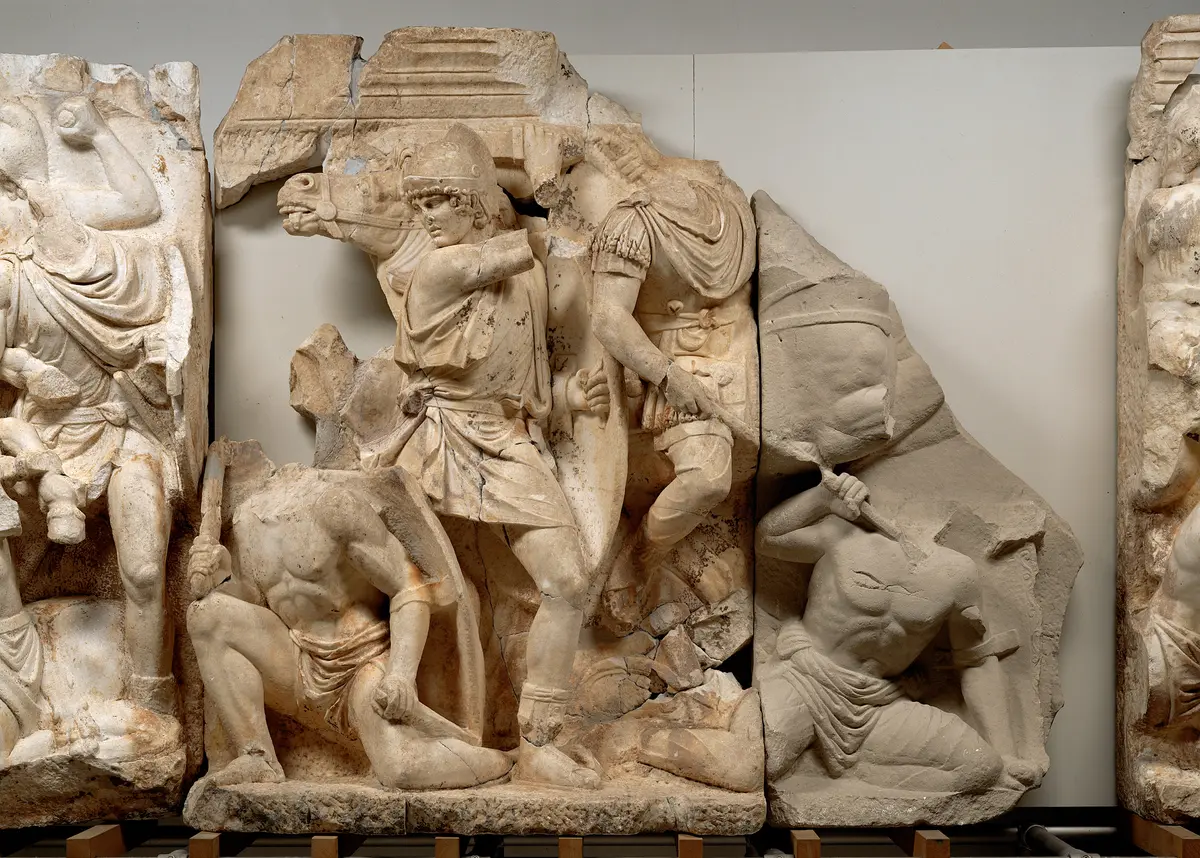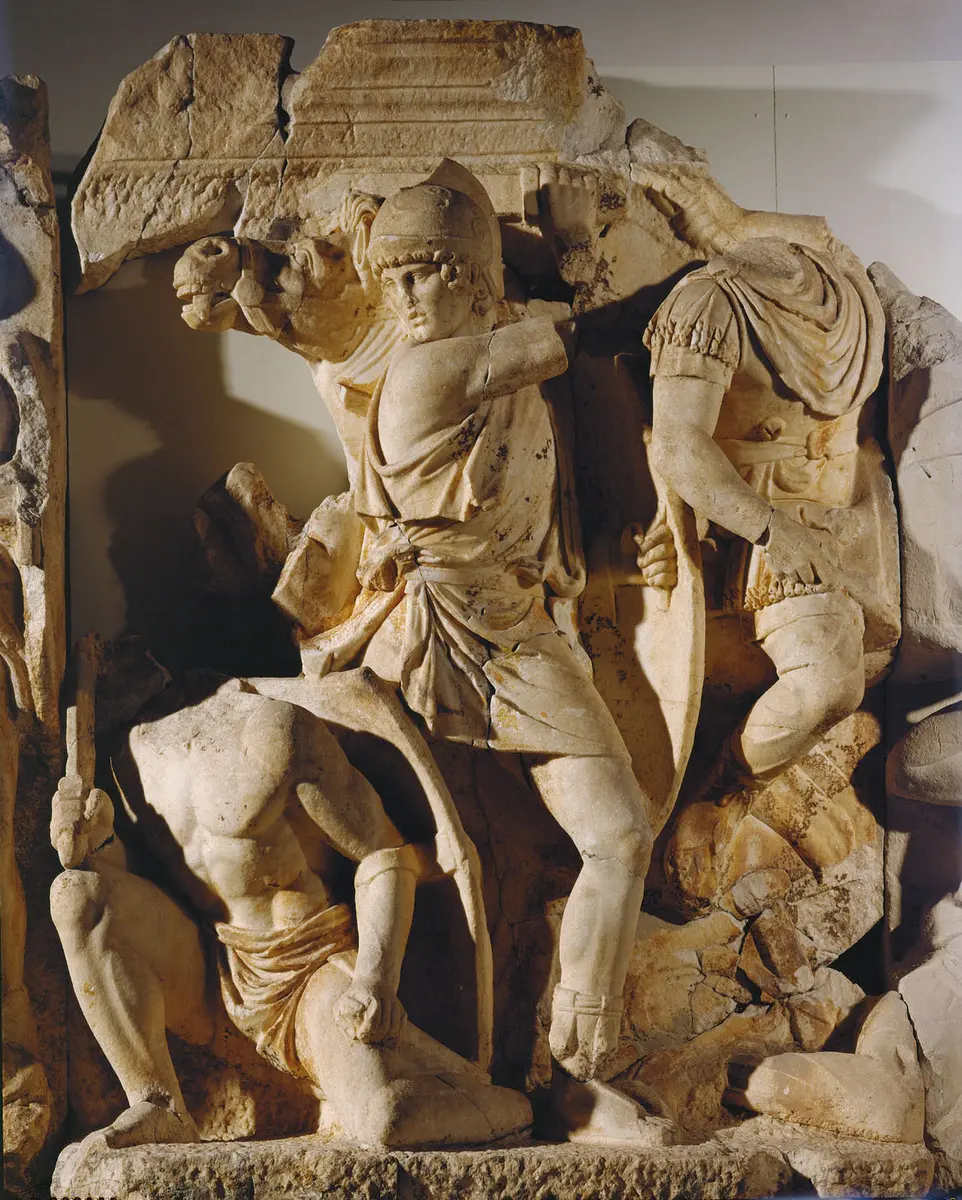Schlachtenszene, Schwertkämpfer
Teil des sog. Parthermonuments sind die Platten, die eine Schlacht zwischen Barbaren und Römern zeigen. Die Barbaren in unterschiedlicher Kleidung, mit Hosen und phrygischen Mützen sowie meist nacktem Oberkörper, sind unterlegen: Sie sind teilweise verwundet, teilweise getötet oder auf der Flucht. So bleibt kein Zweifel, dass die Römer den Kampf gewinnen werden. Der Schwertkämpfer in der Mitte ist nur mit einem attischen Helm und einem kurzen Gewand bekleidet, zweifellos keine wirklich "historische" Darstellung eines römischen Soldaten. Rechts im Hintergrund reitet ein Feldherr, bekleidet mit einem Muskelpanzer, darüber die Feldherrenbinde, in der Rechten eine Lanze, mit der er einen Barbaren niederstößt.
Title:
Schlachtenszene, Schwertkämpfer
Time:
Mitte 2. Jh. n. Chr.
Object Name:
Relief
Culture:
Römisch
:
Ephesos Celsusbibliothek Umgebung (Selçuk, Kleinasien, Türkei)
Material/technology:
Marmor
Dimensions:
H. 208 cm, B. 146 cm, D. 59 cm
Copyright:
Kunsthistorisches Museum Wien, Antikensammlung
Invs.:
Antikensammlung, I 866
Provenance:
Sultan, Abdul, Hamid, II.; Österreichische Ausgrabungen in Ephesos; Geschenk an Kaiser Franz Joseph; 1911 nachträglich inventarisiert

